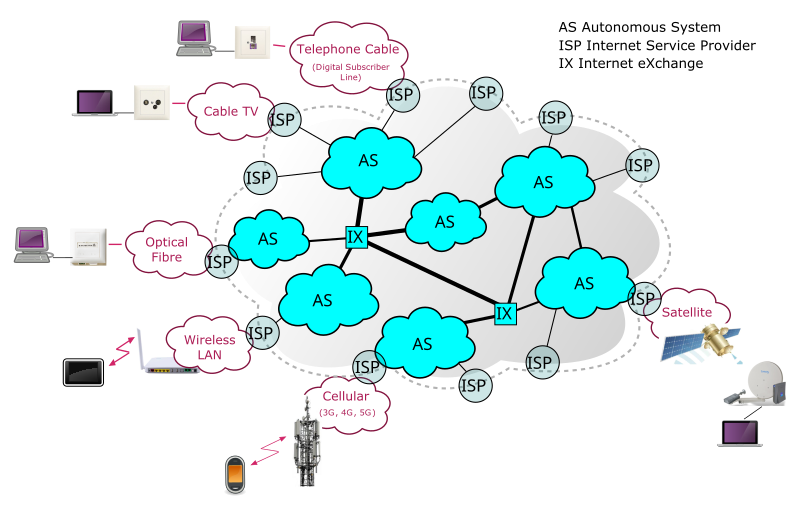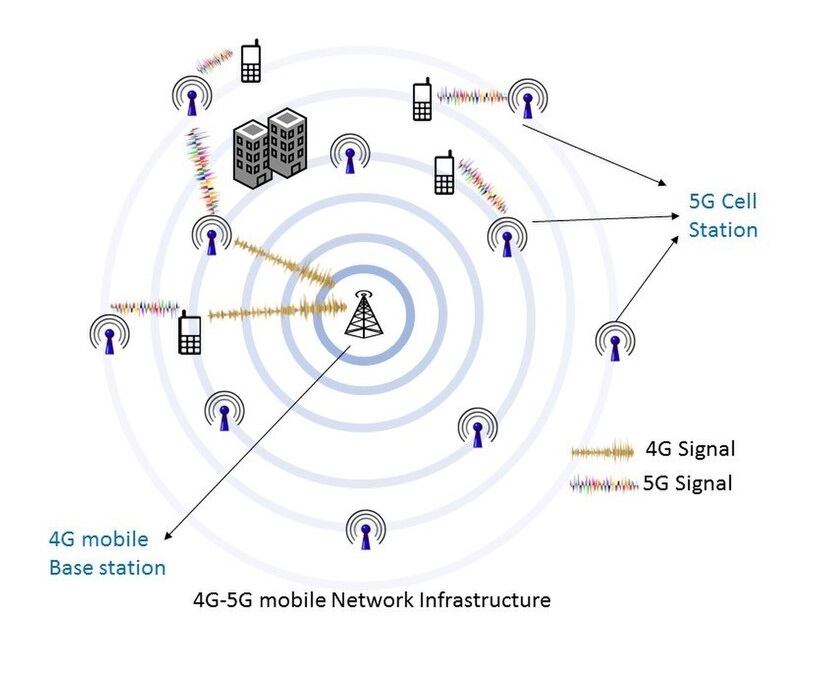
The world we live in today is driven by technology, with the internet and smartphones being central to daily life. They have transformed how we communicate, access information, and even how we conduct business. However, behind this vast web of information exchange, there exists a complex and intricate system of mathematics that makes it all possible. From the algorithms that power search engines to the physics behind wireless communication, the mathematics of the internet and phones is a foundational element of modern society.
In this article, we will explore the key mathematical concepts that underpin the functioning of the internet and mobile phones. From number theory and coding theory to graph theory and optimization algorithms, we will examine how these areas of mathematics contribute to the systems that power the digital world.
1. The Role of Algorithms in Internet and Phone Systems
At the heart of the internet and mobile communication is the algorithm. Algorithms are step-by-step procedures or formulas for solving problems, and they form the basis of most digital technologies. Whether it's routing data packets over the internet or processing signals in mobile networks, algorithms determine how efficiently and reliably communication happens.
Search Engines and Information Retrieval
Search engines like Google rely heavily on algorithms to index and retrieve information from the vast expanse of the internet. The primary mathematical concept here is information retrieval, which involves ranking and finding the most relevant pages for a given query. One of the most famous algorithms used for this purpose is PageRank, developed by Google founders Larry Page and Sergey Brin in the late 1990s.
PageRank uses graph theory, where the internet is modeled as a massive directed graph with web pages as nodes and hyperlinks as edges. The idea is to rank a web page by considering the number and quality of links pointing to it. The PageRank algorithm uses matrix algebra to calculate the importance of each page, based on the structure of the web.
Compression Algorithms
Efficient communication, especially over mobile phones or the internet, requires reducing the amount of data transmitted without losing information. This is where data compression algorithms come in. These algorithms use mathematical concepts from information theory and statistics to identify and remove redundancy in data.
The most well-known compression algorithms include Huffman coding, Lempel-Ziv-Welch (LZW), and JPEG for image compression. Huffman coding, for instance, is based on the idea of assigning shorter binary codes to frequently occurring symbols, while longer codes are assigned to less frequent symbols. This is achieved using binary trees and the concept of prefix codes, which ensure that no code is a prefix of another.
In the context of mobile phones, video streaming services like YouTube and Netflix rely on sophisticated video compression algorithms to minimize data usage while maintaining high video quality. These use Discrete Cosine Transforms (DCT), which are based on mathematical operations that represent image data in terms of frequencies, reducing the amount of data required to store or transmit a video.
2. Network Theory and the Structure of the Internet
The internet is essentially a network of interconnected devices, servers, and routers. The mathematical study of these networks, known as network theory, involves analyzing the structure and behavior of complex systems of interconnected elements. This includes topics like graph theory, game theory, and optimization.
Graph Theory: The Foundation of Networking
Graph theory is the mathematical study of graphs, which are structures composed of vertices (nodes) connected by edges (links). In the context of the internet, the nodes represent devices or servers, and the edges represent communication links between them. Routing data across the internet relies heavily on graph algorithms to determine the shortest or most efficient paths between devices.
One well-known algorithm for finding the shortest path in a graph is Dijkstra’s Algorithm, which uses a priority queue to explore all possible paths between nodes and selects the shortest one. This algorithm is widely used in routing protocols, including Border Gateway Protocol (BGP), which is responsible for determining the best routes for data across the internet.
In addition to routing, graph theory also plays a role in load balancing and network reliability. These areas are concerned with ensuring that data is distributed evenly across the network and that the network remains functional even if some nodes fail. Minimum spanning trees, network flow algorithms, and connectivity analysis are all key mathematical tools used to design robust and efficient networks.

The Internet as a Small-World Network
A fascinating property of the internet is that it exhibits a phenomenon known as the small-world network. This means that most nodes are not directly connected to each other but can still be reached through a relatively small number of intermediate steps. Mathematically, this is described by the small-world phenomenon, which is characterized by high clustering and short path lengths between nodes.
The small-world property of the internet can be understood through the concept of degree distribution, which describes how many connections each node has. Research has shown that the internet follows a power-law distribution, meaning that most nodes have a small number of connections, while a few nodes (such as major websites or backbone servers) have a disproportionately large number of connections. This distribution leads to the small-world effect, where any two nodes can be connected by a surprisingly short path.
3. Coding Theory and Error Detection
Mobile communication and the internet rely on the reliable transmission of data, even in the presence of noise or other disruptions. One of the key areas of mathematics that ensures this reliability is coding theory. Coding theory is concerned with designing codes that allow data to be transmitted and received with minimal errors.
Error Correction Codes
To understand error correction, consider the challenge of transmitting a message over a noisy channel, such as a mobile phone signal. The message might be corrupted due to interference, and parts of the data may be lost or altered. To combat this, coding theory uses error correction codes, which add redundancy to the data in a controlled way so that errors can be detected and corrected.
One of the most famous error-correcting codes is the Hamming code, which adds extra bits to a message to ensure that any single-bit error can be detected and corrected. For more complex errors, more advanced codes like Reed-Solomon codes and Turbo codes are used in mobile communication systems, including 4G and 5G networks.
In mobile phones, the LTE (Long-Term Evolution) standard uses powerful error-correcting codes to ensure that data can be transmitted efficiently and reliably, even in environments with high interference. These codes help maintain a stable connection and prevent dropped calls or slow data speeds, even when the signal strength is weak.
Cryptography: Securing Communication
Another important aspect of internet and phone communication is security, and this is where cryptography comes into play. Cryptography is the science of securing information through mathematical algorithms that encode messages in a way that makes them unreadable to unauthorized users.
Modern cryptography relies heavily on number theory, particularly the study of prime numbers and modular arithmetic. For example, RSA encryption is based on the fact that it is computationally difficult to factor large composite numbers into their prime factors. RSA is used for securing communication over the internet, including in HTTPS connections, as well as for verifying identities through digital signatures.
Mobile phones also use encryption for secure communication, from encrypting phone calls to protecting sensitive data stored on the device. In 4G and 5G networks, encryption protocols such as Advanced Encryption Standard (AES) are used to ensure that data transmitted between the phone and the network remains confidential and tamper-proof.
4. Optimization and Wireless Networks
In mobile phones, the communication system must be optimized to ensure the best performance with limited resources, such as bandwidth and battery life. Optimization algorithms play a crucial role in managing these resources efficiently.
Resource Allocation and Traffic Management
One of the most important optimization problems in wireless communication is resource allocation. This involves determining how to allocate limited resources like frequency spectrum, power, and bandwidth to different users and devices. In 4G and 5G networks, this process is essential to maintain high throughput and low latency, particularly as the number of connected devices continues to grow.
Mathematical optimization techniques, such as linear programming, convex optimization, and game theory, are used to model and solve these resource allocation problems. These techniques ensure that the network operates efficiently and that all users receive the best possible service, even under heavy traffic conditions.
Power Control and Battery Life Optimization
Another critical issue in mobile communication is power control, which ensures that devices transmit with the minimum necessary power to avoid interference and conserve battery life. Optimization algorithms are used to dynamically adjust the power levels of mobile devices, taking into account factors like distance from the cell tower, network congestion, and environmental conditions.
Battery life is another area where optimization is crucial. Mobile phone manufacturers use sophisticated algorithms to optimize the energy consumption of various components, such as the processor, display, and radio, ensuring that the device lasts as long as possible on a single charge.
5. The Future of Mathematics in Internet and Mobile Phones
As the internet and mobile phone technologies continue to evolve, new mathematical challenges and opportunities will arise. The increasing demand for high-speed data, the proliferation of connected devices, and the rise of technologies like 5G and the Internet of Things (IoT) will require innovative mathematical solutions.
One promising area of research is quantum computing, which has the potential to revolutionize the way we process and transmit information. Quantum algorithms, based on the principles of quantum mechanics, could lead to breakthroughs in areas like cryptography, data compression, and network optimization. However, the mathematics of quantum computing is still in its early stages, and much work remains to be done before it can be applied to real-world problems.
Another exciting development is machine learning, which uses statistical methods and optimization techniques to enable computers to learn from data. In the context of the internet and mobile phones, machine learning algorithms could improve search engines, enhance network security, and optimize resource allocation in mobile networks.
Conclusion
The mathematics of the internet and phones is a vast and intricate field that spans many areas of mathematics, including algorithms, graph theory, coding theory, and optimization. These mathematical concepts form the foundation of the systems that enable communication and data transfer in the digital world. As technology continues to evolve, the role of mathematics will only become more critical in addressing the challenges and opportunities of the future.
The interplay between mathematics and technology is not only fascinating but also essential for the continued advancement of the internet and mobile phone systems. From ensuring secure communication to optimizing network performance, the mathematical tools that underpin these technologies are shaping the future of our digital world.
You can learn these concepts and more at Dr Hock's maths and physics tuition.